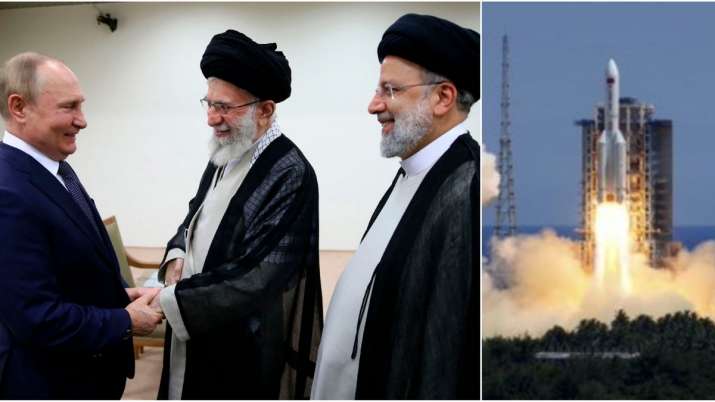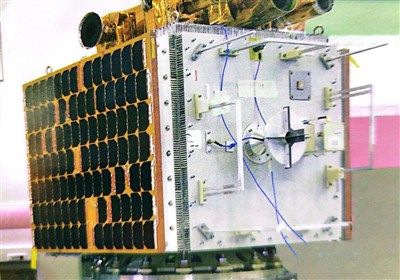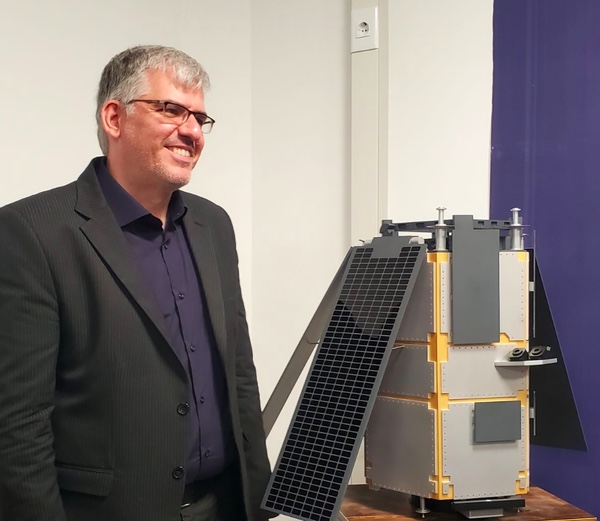Amid growing tensions with the West, Russia has launched a research satellite manufactured in Iran into space. According to the official IRNA news agency, a Russian Soyuz rocket launched the Pars 1 remote sensing and imaging satellite on Thursday from the Vostochny Cosmodrome. The satellite will study Iran’s topography from an orbit of 310 miles (500 km).

Iran’s Telecommunications Minister, Issa Zarepour, has claimed that Pars-I, a technology developed by Iran, is “fully domestically developed.”
The United States has warned Iran against such launches, claiming the technology can be used for ballistic missiles. Iran, under sanctions from the United States since withdrawing from a nuclear deal in 2018, claims its satellite and rocket launches are for civil or defense purposes. In August 2022, Russia launched Iran’s remote-sensing Khayyam satellite.
Iranian satellite Pars 1 launches into orbit
Issa Zarepour, Iran’s Information and Communications Minister, announced the use of a Russian launch base for Iran’s Pars 1 research-sensing satellite, launched by a Russian Soyuz rocket from the Vostochny Cosmodrome. The satellite, which weighs 134 kg and has three cameras, was launched from the cosmodrome in the Amur region of Russia’s Far East, near the Russian border with China. Zarepour emphasized the need for a Russian launch base due to the limitations of domestic launch bases.

Iran launched three satellites using its rocket in January, following a research satellite launched by its Islamic Revolutionary Guard Corps.
Pars-1 Objectives
An important turning point in Iran’s space program was reached when the satellite was launched using a Soyuz rocket from Russia’s Vostochny Cosmodrome spaceport. The 134-kilogram Pars-1 satellite has three image cameras on board. The Iranian Space Research Institute finished the design, building, assembly, and testing of the research satellite Pars-1. The main objectives of the spacecraft are to test technology for future operational satellites, create a market for domestic remote sensing data, and provide useful images.

With its thermal infrared camera, Pars-1 can photograph 95% of Iran’s land in less than 100 days, including at night. It can image the whole country in less than 45 days. The Pars-1 satellite is a multi-mission satellite that tests the functionality of deployable solar panels, assesses orbit correction using cold gas thrusters, evaluates independent satellite positioning capabilities without GPS, examines power generation and distribution systems using solar panels and homemade batteries, conducts high-rate image data transmission in the X-band frequency, and measures space radiation levels using a dosimeter payload.
Iran-Russia increase their space cooperation
With little fanfare, Russia and Iran are progressively increasing their space collaboration. Three more are anticipated to be launched in the upcoming years, after the August launch of an Iranian remote-sensing satellite manufactured by Russia from the Baikonur Cosmodrome.

The Russian-Iranian project, which was widely reported in Russian media, went into a virtual news blackout in the following years, raising doubts about an actual contract. In February 2021, a representative of NPK Barl revealed that a remote sensing satellite launch for a foreign customer was set for the second quarter of the year. Despite being openly linked to the project, the company did not identify the customer. President Vladimir Putin dismissed a story on the Iranian satellite published in the Washington Post as “fake news” and “nonsense.”











